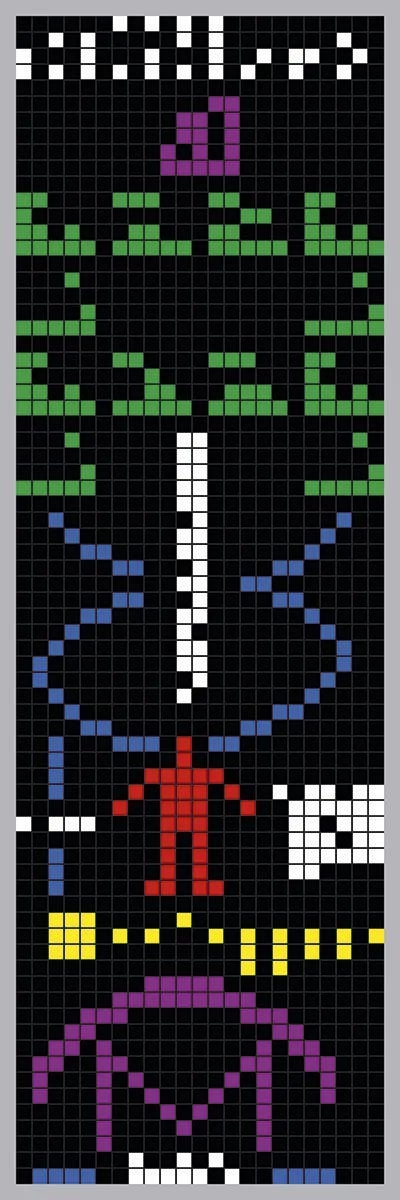Dr Douglas Vakoch is the president of Messaging Extraterrestrial Intelligence (METI), based in California. He is an astrobiologist, extraterrestrial researcher, and psychologist, and an elected member of the International Institute for Space Law. Before founding METI, he worked at SETI for 16 years. He has also edited numerous books about psychology, space exploration and extraterrestrial intelligence.
- Listen to the full interview with Douglas on theScience Focus Podcast
- Enter the BBC Science Focusdraw an alien competitionby 5 January 2021 for a chance to win a bundle of Dara Ó Briain’s science books.
People might be familiar with SETI – the search for extraterrestrial intelligence. You’re the president of METI (Messaging Extraterrestrial Intelligence). Tell us about what you do.
METI reverses the process of SETI. SETI, searching for extraterrestrial intelligence, listens for radio or laser signals from space. At METI, we flip it around and instead of listening, we transmit powerful, intentional messages to nearby stars in the hope of eliciting a response.
Why do you want to send out a signal? And how would that help us find alien life?
My big concern is that there are, in fact, a lot of other civilisations out there, but they’re doing exactly what we are. They have these robust SETI programmes and everyone is listening, but no one is saying hello. And so this is our effort to join the galactic conversation.

Have messages of this sort been sent before?
Yeah, there have been sporadic messages sent out. The most famous message was transmitted from what was the world’s largest radio telescope at the time in Arecibo, Puerto Rico. To demonstrate to extraterrestrials, and ourselves, that we could do it, a brief three-minute message was sent out into the Universe.
The message itself was the numbers from 1 to 10 in the binary format, then a description of chemical elements important to life on Earth in terms of their atomic numbers. And there was a description of our DNA, what we look like, how tall we are, how many of us there are on Earth, what our Solar System is like, what the telescope is like. So it was pretty ambitious to cram a lot of information in three minutes.
At METI, we take a different approach. Instead of trying to send everything, we send something that will be succinct and intelligible. My concern of sending everything is that maybe nothing will be understandable. So we take the opposite strategy and – instead of an encyclopedia – we send a primer that is really targeted to alien scientists.
Read more about extraterrestrial life:
- What do aliens look like? Animals on Earth may hold the answer
- Alien life in our Solar System: 5 best places to look
- The BBC Science Focus draw an alien competition
Is the Arecibo signal likely to be heard? Three minutes is quite a short burst of information.
It’s quite a short burst. And it doesn’t follow the protocols that SETI scientists use here on Earth. A one-off transmission is not enough. The other huge problem of the Arecibo message is if it’s detected by the target recipients and they send a reply, we’re not going to get that reply for 50,000 years.
The message was sent as an afterthought. As the Arecibo telescope is built into the surface of the Earth, you can only point about 10° of either side of straight up, so the question was: what’s pretty much overhead? And there’s a prominent globular cluster of stars called M13 that was in target at the appropriate time. But it’s 25,000 light-years away. So certainly we can do better than that.
In 2017, when we sent our first message as an organisation, we sent it to to Luyten’s Star, 12 light-years away. From the transmitter we use in northern Norway, it was the closest star that we could target that was known to have an exoplanet orbiting within its habitable zone. We sent our message three times over and over.
Is the goal to send a specific message? Or is it just to broadcast that we are here?
We want to get a lot of different messages across. One of the things that you’ll see in the Arecibo message are a lot of pictures. There’s a picture of a human being. A diagram of the Solar System. A diagram of the double helix of the DNA molecule. Well, what happens if the alien is blind?
When we sent our message to Luyten’s Star, we designed it specifically for a blind alien. So we wanted to push the boundaries a little bit. One of the arguments for vision is that it evolved 40 times independently here on Earth. So we know it’s useful, if you have an atmosphere that lets sunlight through. But if you don’t, if you’ve got a murky atmosphere, it’s not very useful. Maybe that’s what the alien planet is like.

So we designed our radio signal to convey the most essential information that a physicist on another world would need to know to understand the only thing that we have that we can give them directly. And that’s the radio signal itself. So we illustrate time by sending pulses of different durations. We illustrate notions of frequency by sending messages of different frequency.
Now, does that mean radio waves should be the be-all and end-all of all future messages? Absolutely not. We’re developing a variety of messages, and building on this use of radio waves to communicate.
Some people say it could be risky to send a message to aliens that we know absolutely nothing about. Do you think it’s risky?
I think the point that people miss when they think it’s risky is that the aliens we’re worried about already know we’re here. So if we project our own level of radio technology forwards just 200 or 300 years, we’ll have the ability to detect the BBC as it’s streaming out at the speed of light, out to a distance of about 500 light-years.
Now, we don’t currently have the ability to detect the twin of Earth giving off our level of natural radiation or leakage radiation, TV and radio. But that’s okay. We also don’t have warp drive. We don’t have a way of getting to another star. So we’re not a threat. But just a tiny bit more advanced than we are, and they already know we’re here.
There are a lot of things we have to worry about in this world. Nuclear war, global warming. It would be nice to take one existential threat off the list of worry. So I wish I could tell you that we would be safer if we didn’t send out intentional messages in good conscience. I can’t, though.

Because if there’s anyone out there, then they know we’re here. And, even before the radio signals, they’ve had two billion years to know that there’s complex life on our planet by the changes in our atmosphere.
I think the bigger question is, if they already know we’re here, then what’s the point?So the purpose of METI is not to let the aliens know we’re here for the first time. It’s probably not going to be news to them. Instead, it is examining a question that the Italian physicist Enrico Fermi asked back in 1950. If they’re out there, where are they? It’s been called the Fermi paradox.
One answer to the Fermi paradox that really motivates what we do at METI is called the ‘zoo hypothesis’. So imagine you and I go to London Zoo and we’re checking out a bunch of zebras. We’re looking at them. We’re just getting ready to move on. But all of a sudden, one of them turns directly towards us, looks us in the eye, starts pounding out a series of prime numbers with its hoof.
I don’t know about you, maybe you’re going to go and check out the wildebeest, but I’m going to stay with the zebra and I am going to engage it. And so it would establish a radically different relationship. We knew the zebras were there before. They just weren’t especially interesting, or at least there was no indication that they were trying to reach out to us.
That’s what we’re trying to do with METI, is to reach out to another civilisation and say not only are we here, which you already know, but we want to make contact.
Read more about contacting aliens:
- NASA’s interstellar mixtape: The art and music on the Voyager Golden Record
- Alien contact: a brief history of extraterrestrial languages
Do you think it is likely that sending a message out will get us a message back?
I think there’s a really good chance that it will work if we’re patient. And I think that’s the critical thing.
Am I holding my breath that in 2042 we’re going to get a reply back from Luyten’s Star that we pinged in 2017? No. I mean, I’m going to be listening. I don’t think there’s a good chance. But if we repeat that experiment a hundred times or a thousand times or a million times, then I think we have a realistic chance.
- This article first appeared inissue 357ofBBC Science Focus Magazine–find out how to subscribe here